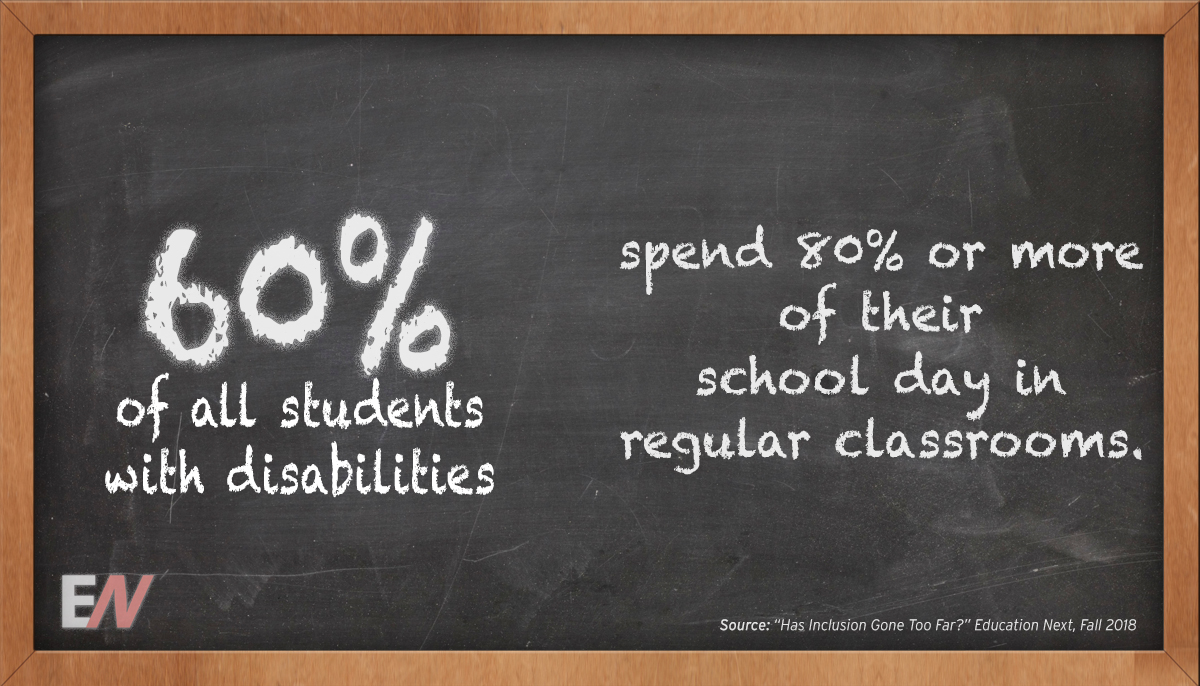
The model of special education known as inclusion, or mainstreaming, has become more prevalent over the past 10 years, and today, more than 60 percent of all students with disabilities (SWDs) spend 80 percent or more of their school day in regular classrooms, alongside their non-disabled peers. In theory, inclusion provides SWDs with access to the grade-level curriculum and the same educational opportunities as their peers. Unfortunately, research has yielded only weak evidence that inclusion confers benefits on SWDs, and studies that report better academic and behavioral outcomes suffer from methodological flaws. In a new article for Education Next, Allison Gilmour explores policies and existing research on inclusion to describe what we know, what we don’t, and how current knowledge should inform decisions about where to educate SWDs. To learn more, read “Has Inclusion Gone Too Far?” on EdNext.org.
—Education Next


